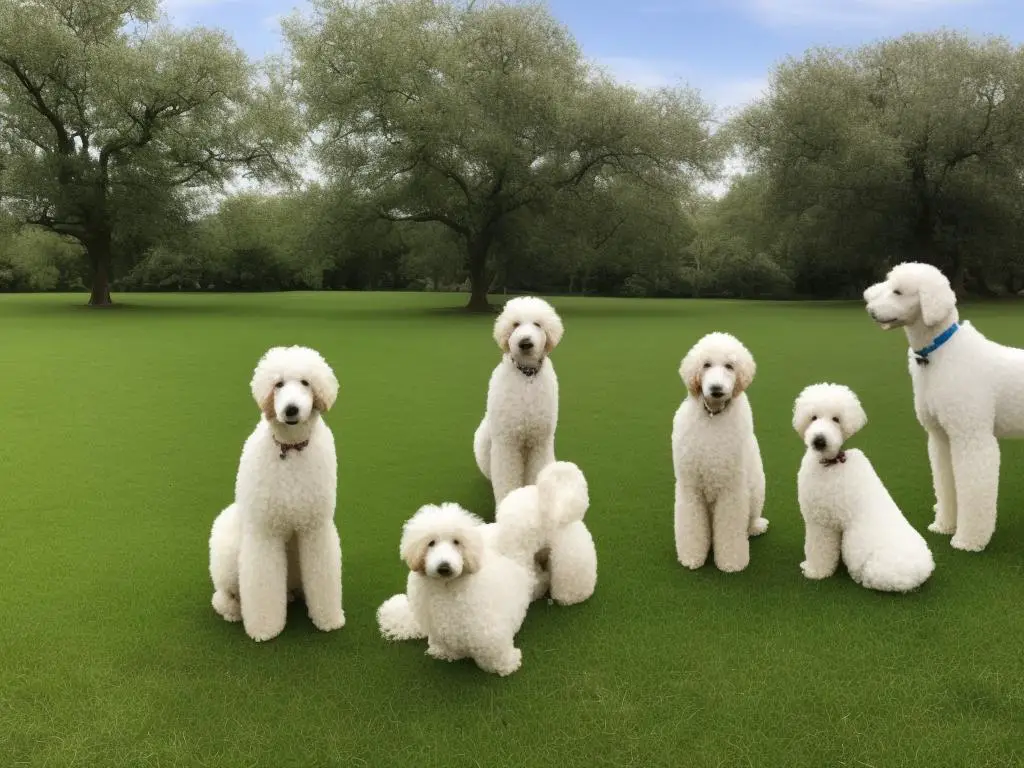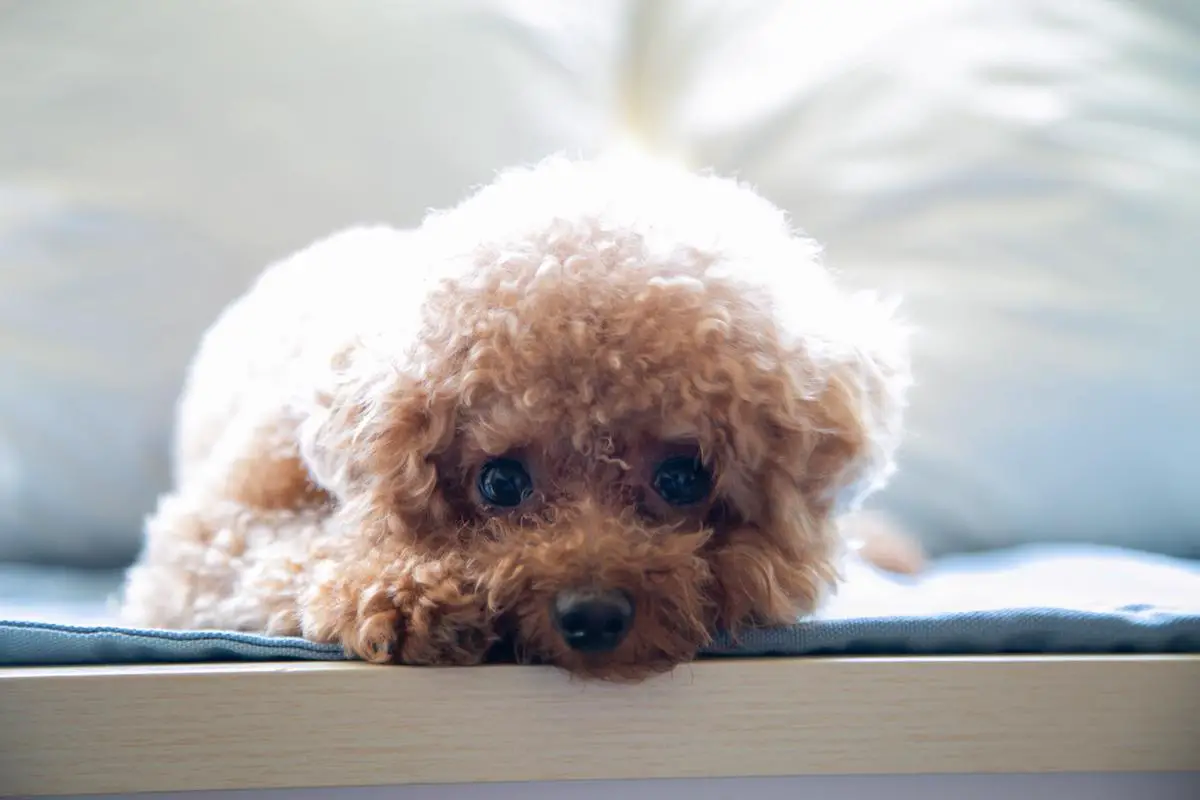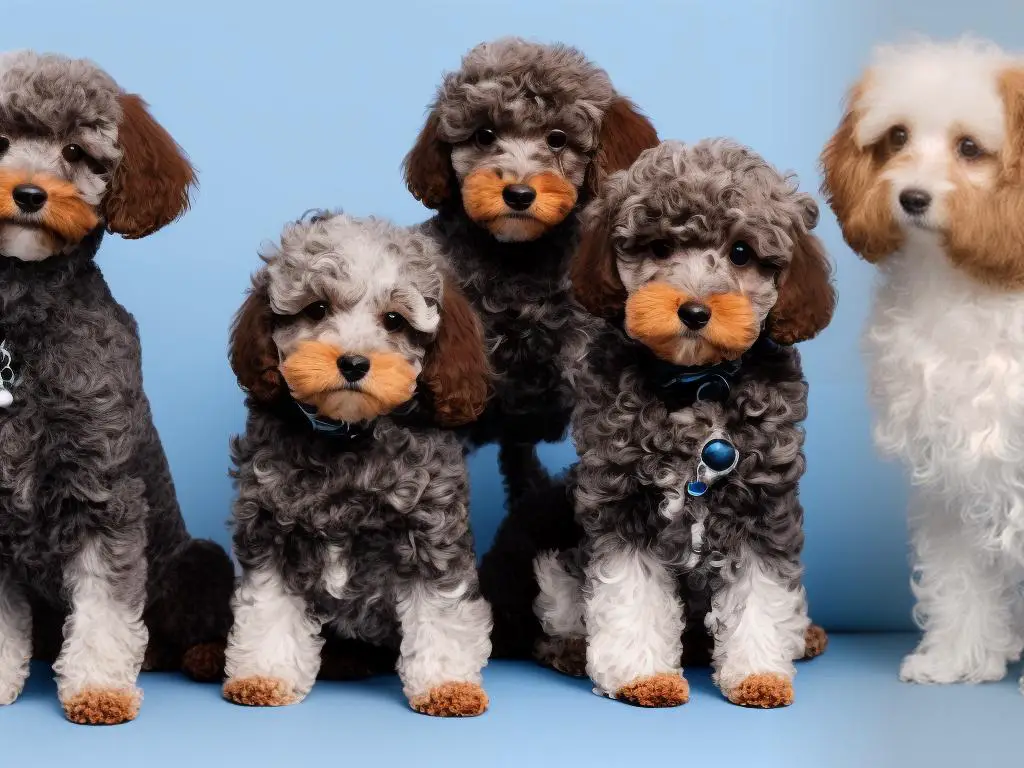Teacup Poodle vs Miniature Poodle: Unveiling the Differences
In the enchanting world of poodle breeding, size really does matter. Poodle sizes, ranging from the imposing standard to the pocket-sized teacup, each offer their unique charm and character. Particularly popular are the compact, adorable teacup poodles, and the slightly larger but equally endearing miniature poodles, each captivating hearts with their diverse physical attributes and temperaments. This exploration unravels the intricate threads that weave the histories, characteristics, and health implications of these two popular poodle sizes together. The invaluable insights gathered allow enthusiasts and prospective owners alike to deepen their understanding of these delightful canine companions.
Basic Understanding of Poodle Sizes
Understanding Poodle Sizes: From Standard to Miniature and Teacup
The breed we know today as the poodle has a long history that traces back to Ancient Egyptian and Roman societies. However, the development of the teacup and miniature poodle varieties are much more recent phenomena.
Selection and Breeding Processes
Selective breeding processes over the years have led to the creation of these smaller poodles. The standard poodle, originally a water retriever, was bred down in size for city-dwelling Europeans who appreciated their smart and sociable nature but lacked the space a full-sized poodle needed. The miniature poodle was later developed from these smaller standard poodles.
The Teacup Poodle
The teacup poodle is not an officially recognized breed but is rather a smaller version of the toy poodle (which is already a smaller version of the miniature poodle). Teacup is a term breeders use to describe an especially small dog, and no specific guidelines or standards define what size a “teacup” should be.
Characteristics & Basic Purpose
Standard poodles are known for their elegant appearance, excellent swimming capabilities, and high intelligence. Miniature poodles and teacup poodles are often loved for their small size, making them suitable for city dwellers or those living in apartments.
While these small poodles no longer serve a practical function in hunting or herding, their size and good-natured temperament have made them popular as companion animals. The miniatures, in particular, have held onto their status as beloved pets and show dogs since they were first developed in the 18th century.
The teacup variety, while also popular, has attracted controversy due to the health issues that can arise from their tiny size. Note that ‘teacup’ is not officially recognized as a size by the American Kennel Club, and it’s crucial to ensure that a teacup puppy comes from a reputable breeder who prioritizes the puppies’ health.
General Physical Traits
Physical traits vary significantly between the different poodle sizes. Standard poodles are one of the largest breeds, standing over 15 inches tall at the shoulder, and can weigh between 45 to 70 pounds.
Miniature poodles typically range from 10 to 15 inches in height and weigh between 10 to 15 pounds. Their smaller size gives them a more delicate appearance, but they maintain the athletic and intelligent traits of the larger standard poodle.
Teacup poodles are tiny, generally standing less than 9 inches tall and weighing less than 6 pounds. Despite their tiny size, these dogs often share the same enthusiastic and intelligent personality found in the larger types, making them happy, energetic companions.
Popularity
In recent years, miniature and teacup poodles have gained immense popularity for their compact size, adaptability, and good-natured temperament. They are often used as therapy dogs due to their size, intelligence, and general agreeableness. Despite some controversy over their health, teacup poodles remain trendy due to their small size. The public must understand the potential health risks involved in owning such a small-sized pet.
Final Thoughts
Regardless of size, all types of Poodles—standard, miniature, or teacup—each have a diverse set of characteristics that have earned them a special place in our homes. Their intelligence, adaptability, and undeniable appeal have made the breed consistently popular among American pet owners.

Physical and Temperamental Differences
Unpacking the Differences: Teacup Poodle vs Miniature Poodle
While teacup and miniature poodles share the title of being some of the smallest members of the poodle breed, they are distinguishably different. The most notable difference lies in their size. Usually, miniature poodles boast a height of 10 to 15 inches from shoulder to paw, while their smaller counterparts, the teacup poodles, barely reach 9 inches.
When we consider weight, miniature poodles usually adjust the scales between 10 to 15 pounds. Teacup poodles, tailored to owners with a preference for smaller breeds, hardly tip the scales at 6 pounds, and frequently weigh between 2 to 4 pounds instead.
Regardless of their size, both poodle types share the breed’s iconic curly, dense fur, available in an array of appealing colors like white, black, apricot, cream, gray, and brown. Occasionally, poodles may even sport a combination of these hues.
Interestingly, smaller size does equate to a shorter lifespan in this case. On average, teacup poodles live up to roughly 12 years, compared to the lifespan of miniature poodles, which averages between 14 to 16 years.
Character Traits: Teacup versus Miniature Poodles
When comparing temperaments and behavioral characteristics, both teacup and miniature poodles are known to be clever, quick learners, and eager to please their masters. However, distinct differences can be noted in their personalities.
Due to their small stature, teacup poodles can be slightly fragile and sensitive, needing careful and delicate handling. Their petite size can lead them to be more vocal and energetic, often as a way to make their presence known.
Conversely, miniature poodles are sturdier and can enjoy more vigorous play. These poodles are known for their playful and outgoing demeanor, their love for companionship, and their joy in learning new tricks. They also have a well-developed sense of humor.
With differences in size and temperament come contrasting training requirements. While miniature poodles need regular exercise including walks, play, and training, teacup poodles, due to their small size, require less physical stimulation and more careful monitoring to prevent injuries.
While both breeds are generally friendly, teacup poodles may need more exposure to social situations to help them adjust to interacting with larger dogs due to their size.
Both variations are loyal companions, but teacup poodles can become anxious if left alone for too long and develop overdependence on their owners. Miniature poodles, while still needing companionship, are usually more independent and can tolerate being alone for a slightly longer duration.

Photo by alisonpang on Unsplash
Healthcare and Lifespan
The Delicate Teacup Poodle: A Compact Companion
The Teacup Poodle is a miniaturized version of the standard breed. True to their name, Teacup poodles do not usually surpass 9 inches in height or 6 pounds in weight, making them small enough to fit in a ‘teacup.’
Despite their charming looks, Teacup poodles can be prone to several health complications owing to their small stature. Issues like dental disease, hypoglycemia, tracheal collapse, and Luxating Patellas (dislocated kneecaps) are common.
A Teacup poodle’s lifespan varies between 10 to 15 years. A balanced diet, adequate exercise, and regular vet check-ups can significantly contribute to a longer, healthier life. Their diet should be nutrient-rich with high-quality dog food, fruits, vegetables, and fish. Despite their size, a routine, light exercise is necessary to maintain their health.
Grooming is also an essential care aspect for Teacup Poodles. Their curly coats require regular brushing to stay clean and prevent matting. It is equally important to conduct regular visits to the veterinarian for timely disease detection and prevention.
Miniature Poodle: A Sturdy Companion
Miniature Poodles are larger than Teacup Poodles, usually reaching heights of 10 to 15 inches and a weight range of 10 to 15 pounds. Their sturdier stature enables them better overall health when compared to their Teacup brethren.
Miniature Poodles also face health issues, though not as delicate as Teacup poodles. They are prone to some genetic issues like hip dysplasia, epilepsy, and Progressive Retinal Atrophy (PRA; a group of degenerative eye disorders that eventually lead to permanent blindness). Regular veterinary check-ups can help detect these in the early stages and ensure timely treatment.
With a lifespan somewhat longer than the Teacup, the Miniature Poodle typically lives between 12 to 15 years. This can be a result of their larger stature and fewer inherent health risks. Miniature Poodles also possess hearty appetites, requiring a diet of high-quality dog food. They also benefit from a diet of natural sources of protein and carbohydrates like fish, chicken, and vegetables.
Miniature Poodles are high-energy dogs. A regular exercise regimen with fun activities and games is crucial to their overall health and wellbeing. Grooming of Miniature Poodles is slightly less intensive compared to Teacups. However, their curly coat still requires regular brushing and grooming by a professional to maintain a clean and healthy coat.
Conclusion
Teacup and Miniature Poodles, despite their differences in size and associated health issues, are lovable companions requiring dedicated care. Feeding them a proper diet, providing adequate exercise, and ensuring routine vet checks are crucial steps towards a healthy, active, and content pet.

Fostering an informed understanding of teacup and miniature poodles is a fascinating journey of discovery. Each breed with its own set of characteristics and distinct personality traits, offers a unique experience to their owners. Awareness about their overall health, lifespan and specific needs equips enthusiasts and potential owners to create a nurturing environment that ensures a long, joyous life for these adorable creatures. In embracing the unique attributes of teacup and miniature poodles, and providing them with dedicated care, we gain not just a pet, but a loyal, lifelong companion that brightens our days with their delightful presence.

